As Hanoi, the capital of Vietnam, has so many interesting things to explore, I didn’t know where to begin with. After considering for a while, I decided to bring you these top 10 places to visit in Hanoi that you cannot miss.
With more than a thousand years of witnessing the flow of national history, Hanoi is a vivid place for Vietnam history lovers.
In this article, I will focus on the best historical and cultural places in the capital. Each destination has its own unique story.
1. Imperial Citadel of Thang Long

The first place to visit in Hanoi that you need to stop by is the Imperial Citadel of Thang Long. It was recognized by UNESCO as a world cultural heritage with various historical and cultural values in 2010.
This massive architectural work was built by the kings in Vietnam throughout many historical periods. It also has become the most important relic in the Vietnamese monument system.
In one of the largest archaeological excavations in Vietnam in 2002, people discovered many interesting traces of the Imperial Citadel of Thang Long.
Through these traces, we could imagine how this place looked and changed during the 13 centuries with relics and cultural layers stacked on top of each other.
In particular, these vestiges have partly reflected the historical process stretching from the Northern colonial period (7th century to 9th century), throughout the dynasties: Ly, Tran, Le, Mac, and Nguyen (1010 -1945).
2. Hoan Kiem Lake (Hồ Gươm)
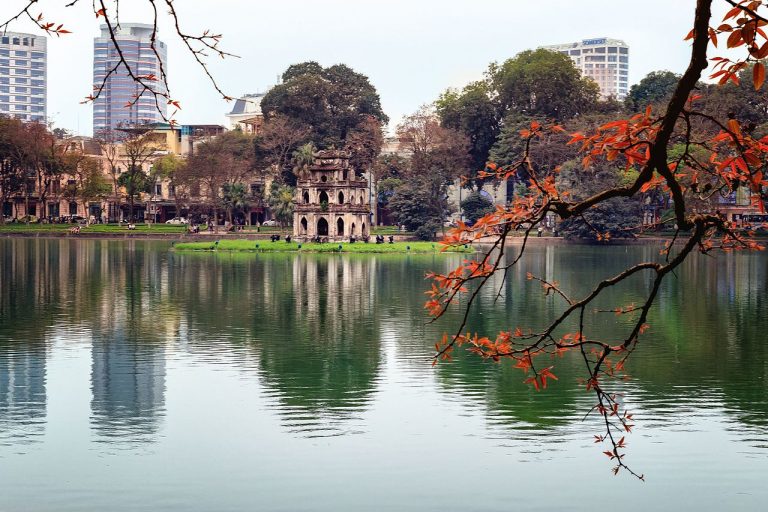
As opposed to Ho Chi Minh city, Hanoi has large and beautiful lakes. They are considered as the lungs of the capital.
One of the most famous lakes in Hanoi is Hồ Hoàn Kiếm or Hồ Gươm (literally translated as Lake of the Returned Sword). The name of the lake have a mysterious story behind them.
According to legend, when Le Loi, a politician and military leader in Vietnam, stood up to lead the Lam Son uprising in Thanh Hoa against the Ming army.
He accidentally caught the sword called Thuan Thien. Thanks to this precious sword, he won consecutive battles, ascending the throne in early 1428.
During a boat trip on this lake, Le Loi suddenly saw a golden turtle appear. When the king pointed his sword towards it, the turtle took his sword, dived to the bottom of the lake, and never came back up again.
This event implied that God lent a sword for Le Loi to fight the enemy. When the country was at peace, he sent a turtle to ask for a sword back. Since then, the lake was named Hoan Kiem Lake, meaning that it’s the lake where the king returned the mysterious sword.
Nowadays, Hoan Kiem lake is a symbol of the capital Hanoi. It’s not only beautiful but also very airy and cozy for people to take a walk, and enjoy the capital atmosphere.
And I really like this experience.

Whenever I travel to Hanoi, walking around this lake is a must-have. I love to walk slowly and chill around the lake. Sometimes I cross some beautiful images of people sitting on a stone bench to rest. I find it so peaceful and authentic.
It’s interesting to have a relaxing moment while still in the heart of the bustling capital. That’s why Hoan Kiem lake is always on the list of top places to visit in Hanoi.
3. Ngoc Son Temple and The Huc Bridge
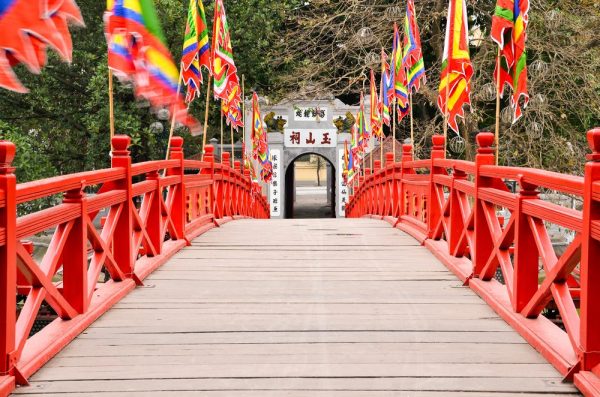
If you go to Hoan Kiem lake, the cluster of relics of Ngoc Son Temple (Đền Ngọc Sơn) and The Huc Bridge (cầu Thê Húc) are great places that you have to visit as well.
Located inside the Hoan Kiem Lake, the Ngoc Son Temple seems like a small island trying to hide some treasures inside.
The main area of the temple has three parts: in front are the three communal houses (the breakwater). In the middle is the main shrine, and finally the harem in the back.
Walking slowly to learn more about the temple is a very interesting experience. Each corner here is like a re-enactment of the historical and cultural values of Vietnam.
In order to go to the Ngoc Son Temple, you need to pass the Huc Bridge.
This bridge was built in the 19th century to connect the Ngoc Son Temple with the lakeshore. It consists of 15 spans, 32 legs of round wooden columns arranged in 16 pairs. The bridge is painted red with a curved design like a giant shrimp.
The Huc Bridge means retaining the beautiful light of the sun. Because the bridge is facing the East, towards the sunrise to receive a full sunlight source.
That’s the reason why the bridge has been a symbol of the sun, life, and happiness in Hanoi for a long time.
4. Ho Chi Minh Mausoleum

The next place to visit in Hanoi is the Ho Chi Minh Mausoleum. I would say that it could be one of the most special experiences you can have in Vietnam.
Also known as Uncle Ho’s Mausoleum, here is the final resting place of the Vietnamese Revolutionary Leader and President, Ho Chi Minh.
After President Ho Chi Minh passed away, the Government preserved Ho Chi Minh’s body and put it in the sepulchre so that he could “live forever” with us.
This place is a special work not only because of the spiritual meaning behind it, but also for it’s design. The architecture and materials from the inside out were designed and constructed carefully and meticulously.
The overall architecture of the mausoleum is a solid square block, consisting of 3 layers with a height of 21.6m and a width of 41.2m. The structure is designed to be very sturdy, able to withstand floods, bombs, and earthquakes of magnitude 7.
In the middle of the tomb is the room where the corpse is covered with marble. President Ho Chi Minh’s body is conserved in a glass box, on a bed placed on a stone pedestal. On occasions, when people visit the mausoleum, 4 soldiers are guarding it.
5. Vietnam National Museum of History
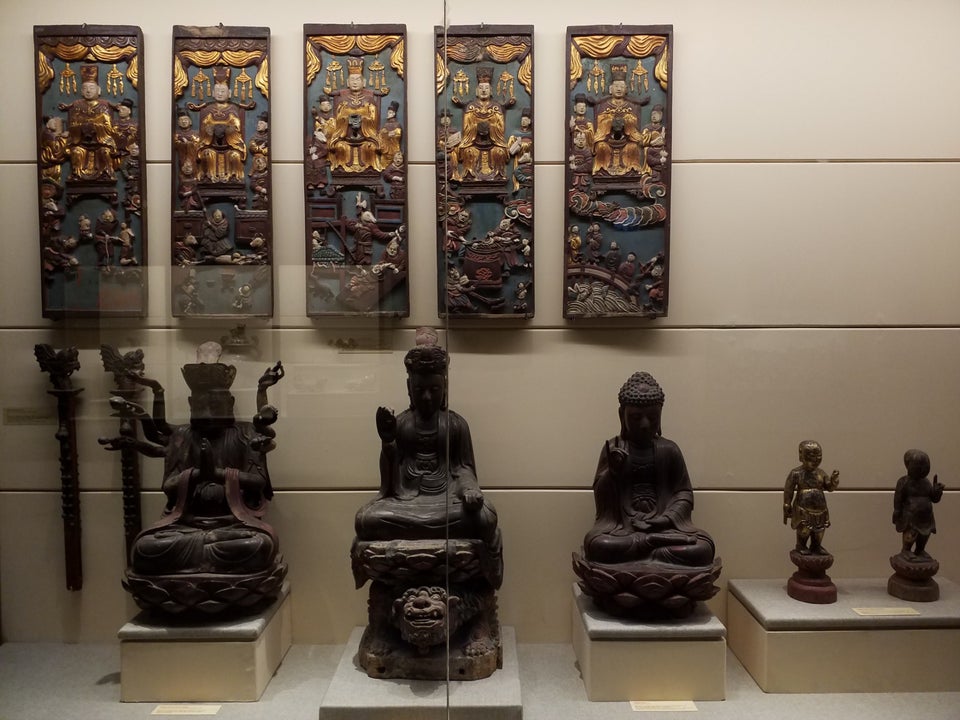
Located in Hoan Kiem district, the National Museum of History is keeping the largest number of national treasures in Vietnam.
This is a place that stores, preserves, and displays about 200,000 artifacts, historical and cultural documents around Vietnam’s History.
Through the selection and appraisal rounds of the National Council of Cultural Heritage, 20 artifacts out of 200,000 have been recognized as National Treasure by the Prime Minister.
Each national treasure is a precious heritage containing the messages of the past, the quintessence of the diverse and rich Vietnamese culture, reflecting the long cultural history.
You can now discover these 20 National Treasures online here. If you are curious to learn more about it, you should visit the National Museum of History in person.
6. Vietnam Museum of Ethnology
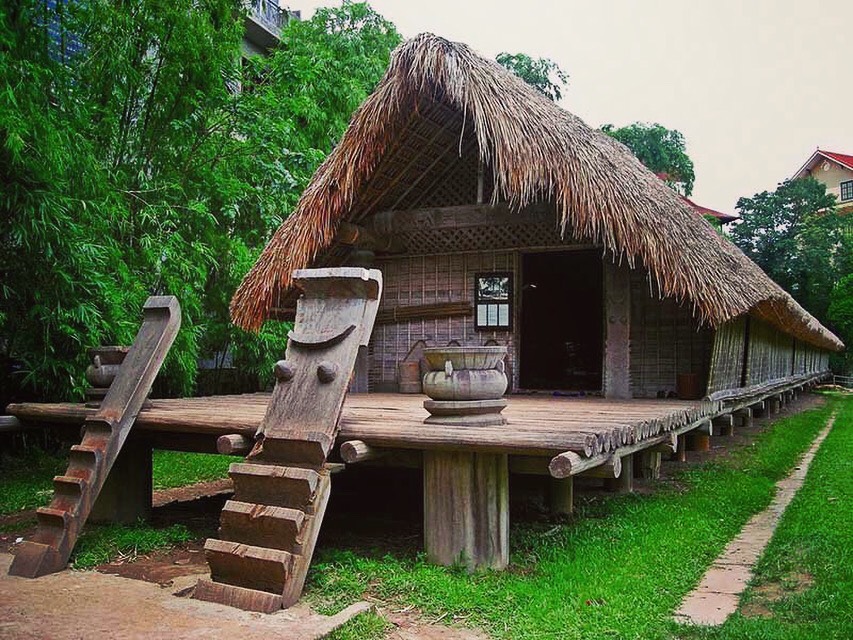
Built in 1981 in Hanoi with an area of 3.27 hectares, this museum was designed by the architect, Ha Duc Linh, and the French interior designer, Veronique Dollfus.
The Vietnam Museum of Ethnology is a miniature picture of the history and culture of more than 50 ethnic groups in Vietnam with diverse cultures.
This is a place for you to fully explore the rich and diverse culture of Vietnam. There’s a display of 15,000+ artifacts that represent the traditional Vietnamese way of life. It also provides plenty of insights into our heritage and culture.
These artifacts are displayed in different categories such as clothing, jewelry, weapons, musical instruments, religion, beliefs, and many other activities.
7. Temple Of Literature Quoc Tu Giam (Văn Miếu Quốc Tử Giám)

The next place to visit in Hanoi that I highly recommend for you belongs to another category that also plays a very important role in the cultural values of Vietnam: education.
If you desire to learn more about how life in school was a long time ago, you need to go to the Temple Of Literature Quoc Tu Giam, the first national university in Vietnam.
As its name, the Temple Of Literature Quoc Tu Giam has 2 different parts: the Temple Of Literature and Quoc Tu Giam.
The Temple of Literature was built first under the rule of King Ly Thanh Tong in 1070. King Ly Nhan Tong then added Quoc Tu Giam in 1076, which was a special university only for children from the king and royal families.
During the reign of King Le Thanh Tong (reigned from 1460 to 1497), the school opened its doors to teach everybody, no matter how wealthy, as long as they were potentially talented enough.
Teaching and learning were taken very seriously here. The court issued a rule: the school must teach students to have good ethics first, then knowledge. This principle still works up to date in Vietnam.
8. Hanoi Opera House

Hanoi is also a place of intersection between various cultures. One of the typical works demonstrating this is the Hanoi Opera House (Nhà Hát Lớn Hà Nội).
While the attractions above are boldly Eastern, Hanoi Opera House is a great influence from the West, which is France.
During the French colonial period in Vietnam, the French government decided to build the Hanoi Opera House in 1901. This work took them 10 years to complete.
The Hanoi Opera House was designed by two French architects: Harlay and Broyer. The concept of the opera was inspired by the prototype of the Opéra Garnier Theater in Paris (France).
As soon as the construction was finished, the French government organized many different art performances from musicals to pantomimes, symphony concerts, ballets… with the aim of enriching their spiritual life as well as bringing French culture into Vietnam.
After the war, the Vietnamese government continued to preserve and develop the Opera House in accordance with its original function.
Nowadays this place is considered as the cultural and art center in Hanoi, where many traditional and modern art forms are performed. This is also a destination for many cultural exchange events between Vietnam and numerous different countries in the world.
9. Water Puppet Show

After walking around all of the previous attractions in Hanoi, it’s a good idea to discover one of the most traditional performances in Vietnam “Múa Rối Nước” (Water Puppetry).
Water puppetry is a unique traditional art form of folk theatre. It uses the water surface as a stage. Normally the water puppetry chamber has the same structure as the old communal house roof in rural Vietnam.
The main actors and actresses of water puppet shows are wooden puppets. Combined with the effects of special light and sound, the artists behind the curtain are the ones who inspire and give life to each character on the stage.
The popular concept of the show is the daily activities of Vietnamese people such as dragon dance, palanquin procession, buffalo fighting, wrestling, etc.
Over the years, this cultural show still retains its charm and attracts the attention of hundreds of audiences from domestic to international friends. If you travel to Vietnam, especially in Hanoi, you must experience this Water puppetry.
10. Hanoi Old Quarter

To end the list of top 10 places to visit in Hanoi, I would love to tell you about the Hanoi Old Quarter (Phố cổ Hà Nội).
The first impression that the Hanoi Old Quarter would bring to you is the ancient vibe. From architecture, color to arrangement, all of them put the capital in the special tone of the old days.
It’s easy to realize this vibe via houses here. They are vintage and they kind of “stick together”. The paint on the house’s walls is faded and mossy. It seems like this area wants to be old on purpose. It wants to keep its origin through time no matter what.
Being here, taking a walk around, and letting yourself get lost in hidden alleys is the best way to feel the city. Every corner in Hanoi Old Quarter appears like an old movie showing in front of you. Old, nostalgic but lively and beautiful.
In addition, an interesting fact about this place is that each street has a different name based on what products are sold there. For example:
- Hang Dau Street (Phố Hàng Dầu) sells herbal oils
- Lo Su Street (Phố Lò Sũ) sells coffins
- Hang Dao Street (Phố Hàng Đào) sells all kinds of fabrics

Nowadays there are many streets that don’t specialize in selling one product anymore, they sell a mix of many different things.
Last but not least, if you want to experience Hanoi’s nightlife, you need to stop by Ta Hien street (Phố Tạ Hiện) to enjoy a glass of Hanoi beer.
If you are a big fan of street food, you are in the right place to satisfy yourself with the heaven of amazing food in the capital, and many many more…!
Over to you
I have a French friend who had an exchange program in Vietnam. She traveled to Hanoi, and fell in love with it.
Her love with the capital has been big enough to make her name her cutest dog as Hanoi :)). Maybe after visiting this land, your cats or dogs or even your children could be named as Hanoi as well 🙂
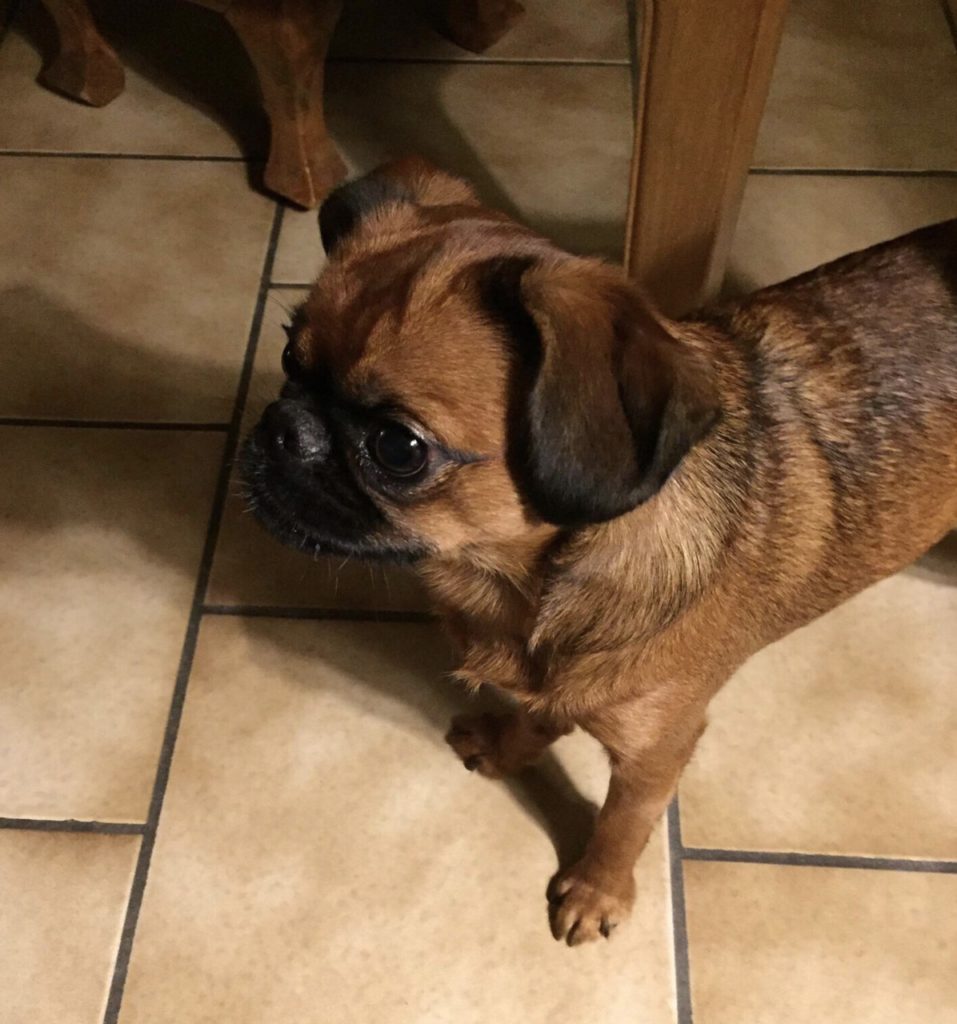
Known as the center of culture and history of Vietnam, Hanoi is full of mysterious legends, stories, and relics that are always interesting to explore. That seems like a magical magnet to pull me and many travelers in over the world closer to the capital.
In one article, of course, it’s not enough to cover everything about Hanoi. There’s a wide range of things left that we need to reveal together.
So feel free to let me know which aspect you desire to know next about this city. My upcoming articles will answer the most questions asked.
If you would like to get the latest content of Vietnam related, ensure to subscribe to the AMA Vietnam blog today 🙂
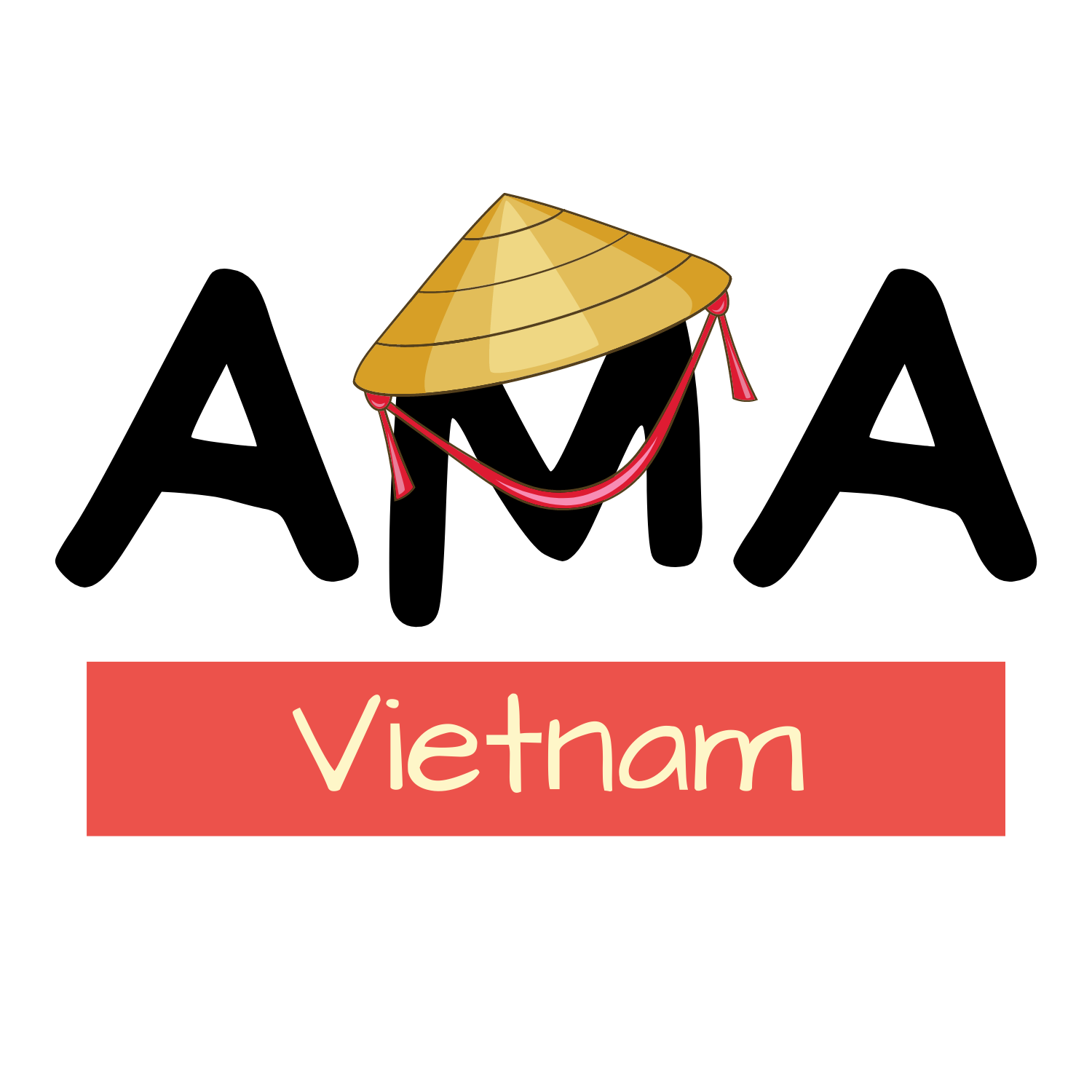
2 Responses